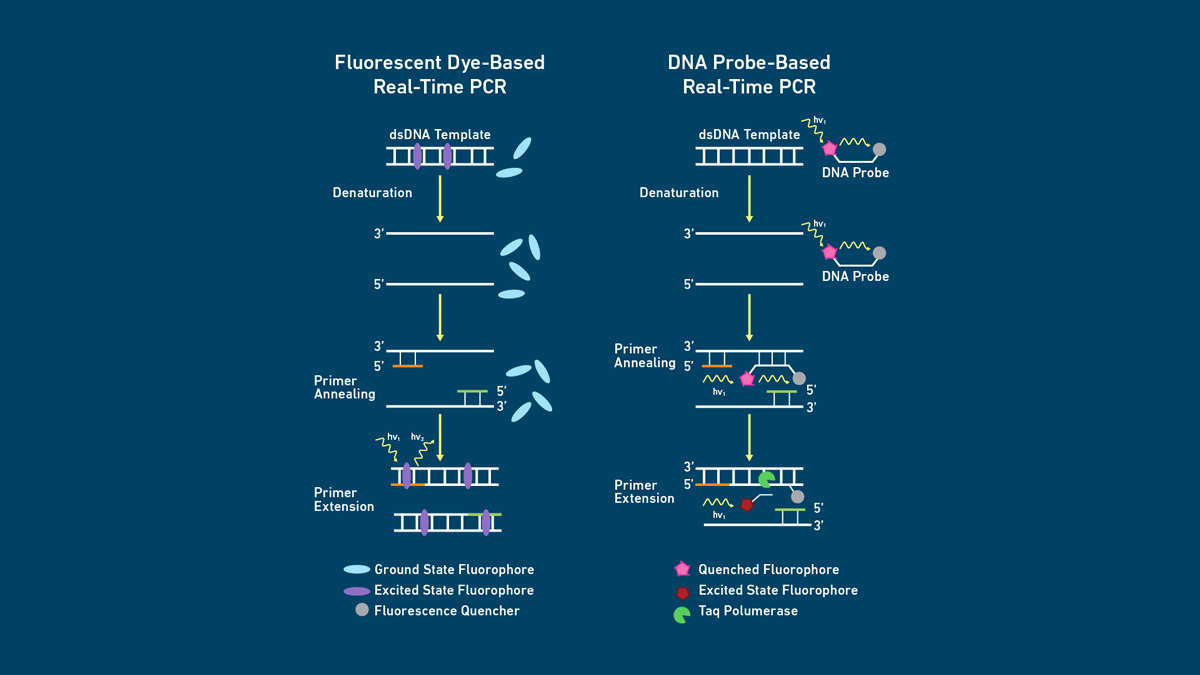Quantitative polymerase chain reaction (qPCR) is crucial for detecting and quantifying nucleic acid sequences in study samples. qPCR assays have multiple applications in clinical diagnostics, research, and food safety testing. Besides, qPCR services, following GLP testing and regulatory recommendations, have revolutionized nucleic acid detection and quantification.
qPCR assays use a thermal cycler that rapidly changes the reaction mixture temperature in a programmed manner. qPCR reaction mixture includes a template DNA or RNA, target sequence primers, and DNA polymerase enzyme. Besides, qPCR assays also use fluorescent dyes or probes to monitor DNA amplification in real-time. Researchers use two common fluorescent probes in qPCR assessment: Taqman and SYBR green 1. Taqman are oligonucleotides labeled with a dye and a quencher. On the other hand, SYBR green 1 intercalates in the double-stranded DNA. The current article dives into the advantages of qPCR assays.
Benefits of qPCR assays
qPCR has several advantages, including high specificity and sensitivity, versatility, high throughput, and real-time monitoring.
- High sensitivity: qPCR assays are highly sensitive in detecting nucleic acid sequences. They can detect even single copies of the sequence of interest.
- Specificity: researchers can design qPCR primers that are highly specific to the sequence of interest. This specificity reduces the likelihood of generating false positive results.
- Real-time monitoring: qPCR assays can monitor the amplification process in real time and provide accurate and rapid data without running gel electrophoresis.
- High throughput: researchers can perform qPCR assays in high throughput formats and allow assessing large numbers of study samples at once.
- Versatility: qPCR assays are highly versatile and have several applications, such as clinical diagnostics, pathogen detection, ddPCR gene expression services, and food safety testing.
Besides, qPCR technology has witnessed multiple advances, including digital PCR, multiplex qPCR, next-generation qPCR, automated qPCR, droplet digital PCR, and CRISPR-based qPCR. These advancements offer increased specificity, sensitivity, and accuracy while expanding qPCR applications beyond routine drug testing and biomedical analysis.
Must Read: Normalization Strategies in Copy Number Variation Assays: Reference Genes, Controls, and Internal Standards
Let us study a few of these advances in detail.
Digital PCR service: digital PCR can quantify absolute quantities of nucleic acids. Digital PCR divides the reaction volume into thousands of droplets, where each droplet contains a single molecule. This specified stratification allows highly accurate quantification of the sequence of interest with high precision and sensitivity.
Droplet digital PCR (ddPCR): This method is a type of digital PCR that employs microfluidics to divide the reaction volume into thousands of droplets. ddPCR services employ this assay format to provide highly precise and accurate ddPCR gene expression analysis to quantify target sequences as well as rare variants and mutations.
Multiplex qPCR: this method can detect and quantify several sequences of interest in a single assay volume, reducing sample requirements and saving time. Multiplex qPCR is ideal for detecting genetic variations, pathogens, and gene expression profiling.
Next-generation qPCR: this method uses advanced sequencing systems to identify and determine nucleic acid sequences. This technique is highly sensitive. Hence, it can detect target sequences present in low abundance with high accuracy.
Automated qPCR systems: this technology is developed to streamline and simplify qPCR workflows, save time, and increase assay throughput. This system automates reaction setup, sample preparation, and data analysis.




